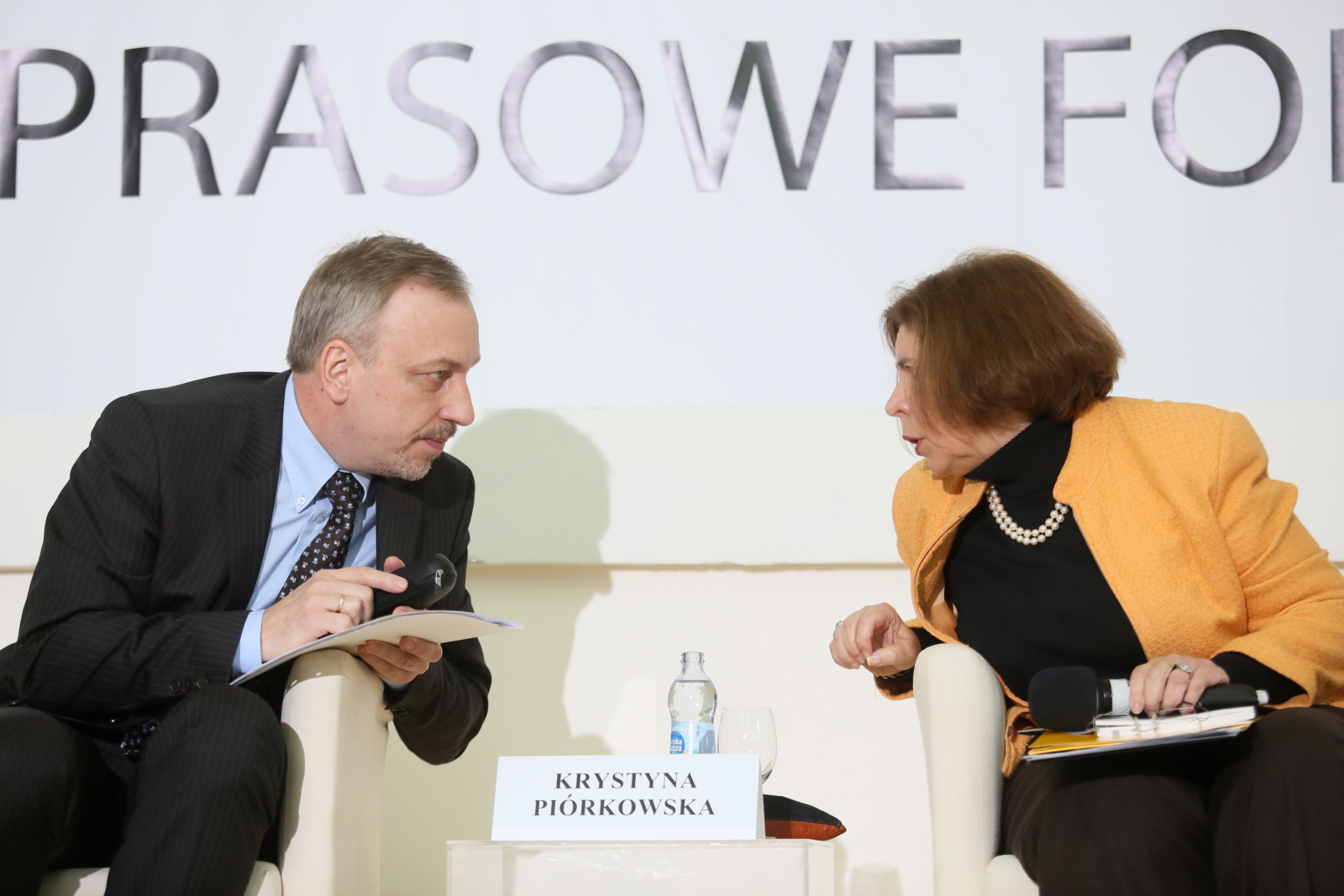
Minister of Culture Bogdan Zdrojewski (L) and Krystyna Piorkowska (R), who discovered the document. (Photo: PAP/Leszek Szymanski
“For us, the most painful aspect is that from 1944-1952, covering up the truth about Katyn was a political decision – it was not accidental,” Zdrojewski said while unveiling the document at a press conference on Wednesday.
“During that time, so much determination was devoted to the matter – including threats against specific people – that the truth about Katyn was unable to see the light of day.”
In April 1943, Nazi Germany broadcast news that it had discovered mass graves in the Katyn Forest (near the Russian city of Smolensk) of about 4000 Polish officers.
Over 20,000 Polish officers and members of the Polish elite had gone missing in 1940, while apparently being held in captivity by the Soviets.
The newly-found document is a testimony from 10 May 1945 made by Lieutenant John H. Van Vliet, an American who was one of several Allied prisoners of war taken by the Germans to Katyn in 1943.
The Germans had hoped that the Allied POWs would confirm evidence that the Soviets had carried out the crime.
However, for several years, Washington and London attempted to suppress information that pointed to Soviet guilt, so as not to upset the alliance with Moscow.
Moscow broke off relations with the Polish government-in-exile in London, after it called for a Red Cross investigation, and Stalin insisted that Germany had carried out the crime.
After the war, Van Vliet was himself ordered to remain silent by the US for several years. The 1945 testimony, which he made under oath, was unknown to academics until now (another testimony from the same month was classified by the US, and later disappeared).
His testimony reveals personal details of British POWs who were taken to witness the Katyn exhumations, and whose names were apparently suppressed by the Allies.
Van Vliet mentions that some of the corpses at Katyn had been found with mementos or documents that indicated that they had been killed in February, March and April 1940, namely from the period before the Germans occupied the Smolensk region.
He argued that the remains looked like they could have been there for three to four years.
Academic Krystyna Piorkowska found the document in November 2013 in the State Archives of the United States in Washington.
“For a moment, I started to think that it was a mirage, that I was hallucinating,” she said of the discovery.
“I was slightly afraid that no one would believe that such a thing exists.”
Moscow finally admitted guilt for the Katyn Crime in 1990. The mass killings and burials took place at several points across the Soviet Union.
Although the Allies suppressed evidence that the Soviets carried out the crime, particularly in the years from 1943-1952, in private Churchill was more frank.
Polish Ambassador to the UK Count Edward Raczynski noted in his diary on 15 April 1943 - just after the German announcement - that the British prime minister had told him that Soviet guilt was likely.
“Alas, the German revelations are probably true,” Churchill said.
“The Bolsheviks can be very cruel.” (nh)
Source: PAP